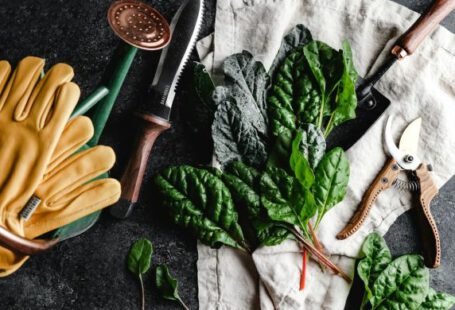Gardening enthusiasts know that healthy plants start with healthy soil. Before you start planting, it is essential to test your soil to ensure it provides the necessary nutrients for your plants to thrive. Testing your soil can give you valuable insights into its quality, pH levels, and nutrient content. In this article, we will guide you through the process of testing soil quality before planting, so you can create the best conditions for a successful garden.
Understanding the Importance of Soil Testing
Soil testing is a crucial step in gardening because it helps you determine the composition of your soil. Different plants have different nutrient requirements, and soil testing allows you to identify any deficiencies or imbalances that may affect plant growth. By understanding the quality of your soil, you can make informed decisions about fertilizers and amendments, leading to healthier plants and higher yields.
Collecting Soil Samples
To test your soil, you need to collect samples from various areas of your garden. Start by dividing your garden into different sections based on factors such as plant types, soil texture, or previous fertilizer application. Use a clean trowel or shovel to collect soil samples from each section. Dig down about six inches and remove a thin slice of soil from the side of the hole. Repeat this process in different locations within each section to get a representative sample.
Testing Soil pH
One of the most critical aspects of soil testing is determining its pH level. Soil pH affects the availability of nutrients to plants, as different nutrients are more readily available at specific pH levels. To test soil pH, you can use a pH testing kit available at most garden centers. Simply follow the instructions provided with the kit to determine your soil’s pH level. Ideally, most plants prefer a slightly acidic to neutral pH range of 6.0 to 7.0.
Assessing Nutrient Content
Apart from pH levels, testing your soil for nutrient content is essential. Nutrient deficiencies can lead to stunted growth, yellowing leaves, and poor plant health. There are various methods for assessing nutrient content, including DIY test kits and professional laboratory testing. DIY kits are affordable and easy to use, providing a basic analysis of key nutrients like nitrogen, phosphorus, and potassium. For a more comprehensive analysis, you can send your soil samples to a reputable laboratory for professional testing.
Interpreting the Results
Once you have the results of your soil test, it’s time to interpret them. Soil test reports typically provide information on nutrient levels, pH, organic matter content, and recommendations for amendments. Understanding the numbers and recommendations can be overwhelming, but don’t worry; many gardening resources and experts can help you decipher the results. Look for recommendations on how much fertilizer or organic matter to add based on your specific soil conditions and the plants you intend to grow.
Taking Action
Armed with the knowledge from your soil test results, it’s time to take action. If your soil is too acidic or alkaline, you can adjust the pH by adding amendments like lime or sulfur. For nutrient deficiencies, choose fertilizers or organic matter that address the specific deficiencies identified in your soil test. Remember to follow the recommended application rates and timing for optimal results.
Maintaining Soil Health
Soil testing is not a one-time event. It’s essential to test your soil periodically, especially if you notice any changes in plant health or growth. Regular testing allows you to monitor soil nutrient levels, make necessary adjustments, and maintain optimal soil health for your plants. Additionally, practicing good soil management techniques like crop rotation, cover cropping, and composting can help improve soil fertility and structure over time.
In conclusion, testing soil quality before planting is an essential step for any gardener. By understanding your soil’s composition, pH levels, and nutrient content, you can create the optimal conditions for healthy plant growth. Collecting soil samples, testing pH and nutrient content, interpreting the results, and taking appropriate action are all crucial steps in the process. Remember that soil testing is an ongoing process, and regular monitoring and maintenance will lead to better gardening success in the long run.





